Blossoming Sow Thistles signal we are mid-season in their annual cycle. Locally we have three Sow Thistles, Common, Spiny, and Field though the latter is found a few hundred miles north of here. Unlike true thistles Sow Thistles look more threatening than they really are. In fact the Common Sow Thistle rarely gets prickles hard enough to be called said. The Spiny Sow Thistle does but still they do not draw blood like the prickles on true thistles.
Sow Thistles are a very mild “bitter” green. They are slightly bitter when raw. Blanching or a little boiling eliminates that bitterness from all but the oldest of specimens. Sow Thistles are among the most common, easy to recognize, and tasty of greens. Of course they are showing up here in the middle of our mild winter whereas in northern climes they are a spring to early summer genus. To read more about Sow thistles, go here.
Every forager has serious hang-ups so we might as well discuss them: Thorns, spines and prickles.
Wintertime can present a foraging challenge to those who live in colder climates. I have written about that as I did grow up in Maine. You can read that article here. Wintertime, even in warmer areas, can also be a good time to look at some plants more closely than other times of the year. One example is the ability to see thorns, spines and prickles more clearly.
While their function can be similar this trio of sharpies have different characteristics and grow on different parts of the plant. This doesn’t mean much when one is in your thumb or starts your ankle bleeding but it can help one to understand some plants better. The main function of these sharp interruptions is to persuade those who eat greenery to dine elsewhere. But they can have secondary functions as well.
Thorns are modified stems, often strong and formidable, and are connected to the plant’s vascular system usually from deeply-seated tissue. They are almost always accompanied by a leaf. Think thorn-leaf. One genus that come to mind is the Hawthorn. Literally across the dirt road where I grew up there was a Hawthorn with two-inch thorns. It was a favorite nesting place for birds because the thorns kept most predatory or egg-stealing mammals at bay. I don’t know about snakes but in cold New England snakes weren’t a common problem. As modified stems (read branches) thorns can and often do have leaves. They can also branch. Other species with true thorns include Firethorn (Pyracantha) and Japanese flowering quince.
Unlike thorns spines are modified leaves or modified stipules which are leaves that really never got out of puberty. They are also attached to the plant’s vascular system, usually external tissue, and are located right below the leaf scar. Acacia and Locus are well-known for spines. Here in Florida the Water Locust is well-armed. Climbing the tree is simply out of the question. One species, Gleditsia triacanthos, can have spines more than a foot long. That’s protection. Do know that some botanists say the Locust have thorns not spines. Not all is settle science in Botanyland.
Cactus also have “spines” but they are quite distinct. In the cactus the spine is actually the leaf itself. What it is growing out of is actually a branch. So on a cactus the spines are actually leaves ands the pads are actually branches. Tiny spines are called “glochids” and are particularly irksome. Cactus spines can also be barbed so to work their way into an offended finger, paw, or mouth. And while one does not often think of this spines can also provide some shade for the plant. Don’t forget that common names can be wrong: The Euphorbia called “Crown of Thorns” should be called Crown of Spines.
If that was not confusing enough, some plants with spines have those modifications on stiff leaves. The American and English hollies are good examples as is the Oregon Grape Holly. Before modern brushes folks would tie English or American Holly branches into a bundle and drag the bundle up and down their chimneys to clean them. Two other common species with spines on their leaf margins are Pineapples and Agaves.
Many plants that are thought to have thorns or spines actually have prickles. It rather destroys the old saying that “every rose has a thorn.” Prickles are more along the line of plant hairs on steroids and can be found anywhere on the plant. Where thorns (stems) and spines (leaves) have definite locations prickles are here and there and arise from surface material thus they can break off easily, or more easily than thorns or some spines. Besides the rose the related shrubs Hercules Club and Prickly Ash have prickles. The latter is a tree that was actually named correctly. Perhaps the best armed tree in North America is the Silkfloss Tree. It is bristling with prickles up to two inches long.
Prickles are often said to help a plant climb, as in a blackberry. And interestingly thorns are also said to help plants climb. Spines are not. As one might expect humans have been encountering these pointy problems for a long time but also using them. They have been employed as needles, pins, and fish hooks. Armed plants have also been used for protection against wild animals and protection for domestic animals and crops. Locally the Natal Plum, which produces an edible fruit, is often planted outside windows. Its double sets of thorns makes burglars think twice. But I also would think twice about jumping out a window if I had to land on a Natal Plum. When kept short armed plants can be protective or, one can grow them tall and cut off lower offended branches. Knowing the difference between thorns, spines and prickles won’t take the pain away but it can help make the plant identification easier.
Want to identify a plant? Perhaps you’re looking for a foraging reference? You might have a UFO, an Unidentified Flowering Object, you want identified. On the Green Deane Forum we — including Green Deane and others from around the world — chat about foraging all year. And it’s not just about warm-weather plants or just North American flora. Many nations share common weeds so there’s a lot to talk about, such as the one to the left. There’s also more than weeds. The reference section has information for foraging around the world. There are also articles on food preservation, and forgotten skills from making bows to fermenting food. Recent topics include: How Could An Infant Be Fed By Foraging? Antiseptic and Antihistamine. Gourmet Foraging. Conyza and Chlorophyll. Can Anyone Tell Me The Name of This Plant? NJ Biennial. Crepis Japonica Nutritional Information? So Much Free Food! Berries! What Kind Of Shrub Is This? Oxalis Corymbosa. Water Hyssop Recipes. You can join the forum by clicking on the button on the upper right hand side of this page.
Foraging Classes: An astute observer will notice there aren’t any classes for a couple of weeks. This is because this week I am teaching at the Florida Earthskills Gathering in Hawthorn and the following week at the Florida Herbal Conference in Lake Wales (see below.)
Sunday, March 6th, Florida State College, south campus, 11901 Beach Blvd., Jacksonville, 9 a.m.
Sunday, March 13th, 9 a.m, Orlando area, exact site to be announced.
Saturday, March 19, Colby-Alderman Park: 1099 Massachusetts Street, Cassadaga, 9 a.m.
Saturday, March 26th, Dreher Park, 1200 Southern Blvd., West Palm Beach, 9 a.m.
Sunday, April 3rd, John Chestnut County Park: 2200 East Lake Road, Palm Harbor, FL, 9 a.m.
Sunday, April 10th, Wekiva State Park, 1800 Wekiwa Circle, Apopka, Florida 32712. 9 a.m.
Sunday, April 17th, Bayshore Live Oak Park, 2200 East Lake Road, Port Charlotte, FL. 9 a.m.
Sunday, April 24th, Wickham Park: 2500 Parkway Drive, Melbourne, FL 9 a.m.
For more information about classes go here.
If you haven’t already you should register for and plan to attend the fifth annual Florida Herbal Conference in Lake Wales. You can even take a side trip and see the famous Bok Tower and Gardens. Organized by Emily Ruff, she has an all-star herbal cast lined up to teach and present. Speakers this year include world-renowned mushroom expert Paul Stamets and herbalist Kathleen Maier, director of Sacred Plant Traditions in Charlottesville, Virginia. Even yours truly will be there for his fifth year teaching wild edibles. Workshops focus on bioregional, earth-centered herbalism, with topics including clinical herbalism, herbal crafts, herbal tradition and history, medicine making, plant identification walks and many hands-on demonstrations. The weekend also includes a marketplace of herbal vendors, musical activities each evening, fun herbal activities during free time, guided movement activities throughout the weekend, a powerful fire circle, and regional mixers. You need to be there. For more information click here.
Many of you have taken the advantage of getting some nearly free mustards seeds from me. I have about half a pound left. As some of you know I am also a gardener. I ordered a few mustard seeds. Somewhere between the ordering and the shipping I ended up with a pound of Osaka Purple Mustard seeds. I have thousands of mustard seeds when I wanted about 30. Thus I have been giving them away in classes and the mail so they will not go to waste. If you want some to grow send me a self-addressed stamped envelope and I will send you some seeds. They will be affixed to tape in a coin envelope so to not exceed a first-class envelope in weight and thickness. The seeds rub off the tape easily. Mail the SASE to Green Deane, POB 941793, Maitland FL. 32794
 All of Green Deane’s videos are available for free on You Tube. They do have ads on them so every time you watch a Green Deane video I get a quarter of one cent. Four views, one cent. Not exactly a large money-maker but it helps pays for the newsletter. If you want to see the videos without ads and some in lightly better quality you can order the DVD set. It is nine DVDs with 15 videos on each. Many people want their own copy of the videos or they have a slow service and its easier to order then to watch them on-line. They make a good gift for that forager you know. Individual videos can also be ordered. You can order them by clicking on the button on the top right of this page or you can go here.
All of Green Deane’s videos are available for free on You Tube. They do have ads on them so every time you watch a Green Deane video I get a quarter of one cent. Four views, one cent. Not exactly a large money-maker but it helps pays for the newsletter. If you want to see the videos without ads and some in lightly better quality you can order the DVD set. It is nine DVDs with 15 videos on each. Many people want their own copy of the videos or they have a slow service and its easier to order then to watch them on-line. They make a good gift for that forager you know. Individual videos can also be ordered. You can order them by clicking on the button on the top right of this page or you can go here.
This is weekly issue 196.
If you would like to donate to Eat The Weeds please click here.

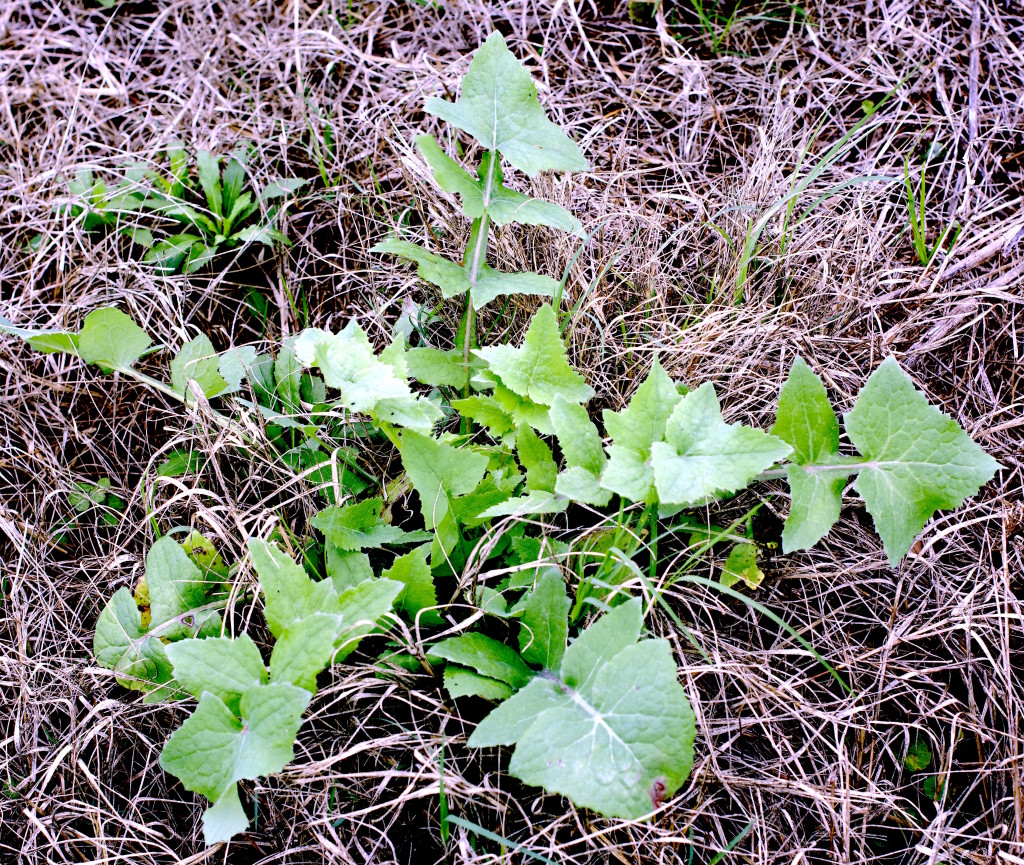
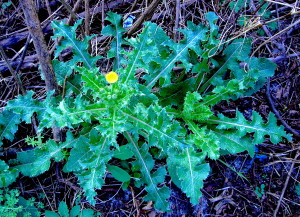
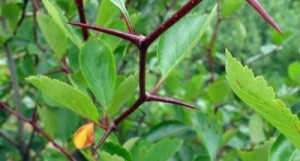
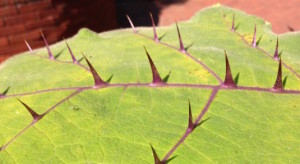
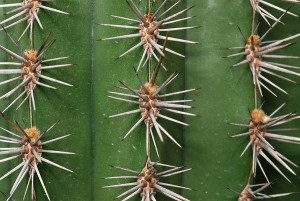
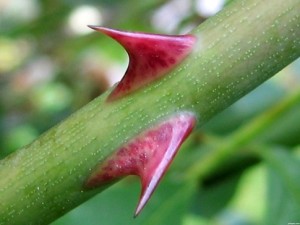
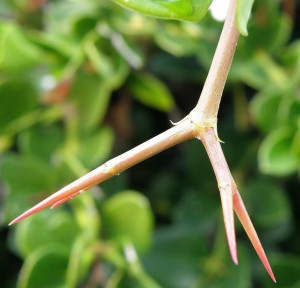
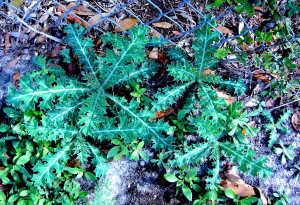
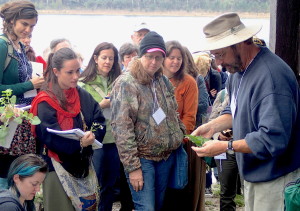

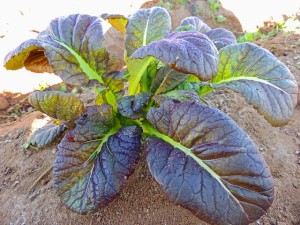

Feeling happy and why? Almost during sunset last Tuesday, I succeeded with the help of a “thorn” from a lemon tree in my garden to grip and remove a foreign body – most probably a glochid from one of many of my cactii . It was staying in my right hand mid-finger for one week causing me much pain. Thank God for the relief of pain to sleep comfortable tonight despite the annoyance caused by not receiving this issue of “Eattheweeds” till midnight – inconvenience from web net. However, with great pleasure, early next morning I’ve found it and gone through eagerly. I was astonished to find a favourable lovely beautiful yellow flower during my usual early morning tour here in my garden. Due to some negligence I missed it last year. More spiritual arousal has penetrated my soul and for sure now I’ve come to identify and name correctly this friend of mine having referred to Green Dean’s photo of “ The Common thisle as one of the most wild greens”. This “Hare thistle” is called by my fellow Sudanese “Moalita” who often use it in salad. At this instant while I’m wondering the beauty of the Sow thisle flower here in Khartoum North and bearing in mind your report concerning those blossoming Sow thitles now on your side signal of mid – season in their annual cycle, I must express whole gratitude by praying “ Subhan Allah, Glorified be Allah “. Call it coincidence or telepathy, this issue has dealt with almost all of what is in mind and memory now.
All three citrus fruit trees in my garden: Lemon, Orange and Grape Fruit, now old enough to show conspicuous thorns. Reminding of my youth fills me with happiness. I remember how formidable to us – seven year old children – thorns of “Laloab”,vernacular for Terminalia chibula and the “Doama”, vernacular for Hyphaene thebaica – I must hesitate to ascribe “prickles” to it instead of our usual old incorrect “thorn” to it. We use to play with the old fallen leaf of the latter after removing the dangerous part. Simply by holding or embracing the leaf base – place of attachment to the tree – to our breast thus acting as the drive wheel of an automobile and leaving the other end to move on the solid ground according to our walking or running motion. It is a curved stick sometimes decorated according to taste – last model automobile – happy days without smartphones! The thorny “Sidr” Arabic for Ziziphus sinachristi And “Tumr Hindi” Sudanese name for Pithecellobium dulce Benth. Or Monkey pod in English which are used here and in many parts of Arab countries as protecting hedges. From these and “laloab” we once grew our bodies as children collecting whatever we could from their nutritious fruits. Sir, the association thorn- stem is reminiscent of :”which came first, the chick or the egg?”.
Feeling happy and why? Almost during sunset last Tuesday, I succeeded with the help of a “thorn” from a lemon tree in my garden to grip and remove a foreign body – most probably a glochid from one of many of my cactii . It was staying in my right hand mid-finger for one week causing me much pain. Thank God for the relief of pain to sleep comfortable tonight despite the annoyance caused by not receiving this issue of “Eattheweeds” till midnight – inconvenience from web net. However, with great pleasure, early next morning I’ve found it and gone through eagerly. I was astonished to find a favourable lovely beautiful yellow flower during my usual early morning tour here in my garden. Due to some negligence I missed it last year. More spiritual arousal has penetrated my soul and for sure now I’ve come to identify and name correctly this friend of mine having referred to Green Dean’s photo of “ The Common thisle as one of the most wild greens”. This “Hare thistle” is called by my fellow Sudanese “Moalita” who often use it in salad. At this instant while I’m wondering the beauty of the Sow thisle flower here in Khartoum North and bearing in mind your report concerning those blossoming Sow thitles now on your side signal of mid – season in their annual cycle, I must express whole gratitude by praying “ Subhan Allah, Glorified be Allah “. Call it coincidence or telepathy, this issue has dealt with almost all of what is in mind and memory now.
The three citrus fruit trees in my garden: Lemon, Orange and Grape Fruit, now old enough to show conspicuous thorns. Reminding of my youth fills me with happiness. I remember how formidable to us – seven year old children – thorns of “Laloab”,vernacular for Terminalia chibula and the “Doama”, vernacular for Hyphaene thebaica – I still had in mind “thorny” instead of classifying it to those with “prickles”. We use to play with the old fallen leaf of the latter after removing the dangerous part. Simply by holding or embracing the leaf base – place of attachment to the tree – to our breast thus acting as the drive wheel of an automobile and leaving the other end to move on the solid ground according to our walking or running motion. It is almost a curved stick sometimes decorated with beads or lids of lemonade bottles – recent model automobile at the time – happy days without smartphones! The thorny “Sidr” Arabic for Ziziphus sinachristi And “Tumr Hindi” Sudanese name for Pithecellobium dulce Benth. also called Monkey pod in English are used here and in many parts of Arab countries as protecting hedges. From these and “laloab” we once grew our bodies as children collecting whatever we could from their nutritious fruits. Sir, the association thorn- stem is reminiscent of : ”which came first, the chick or the egg?”.
Feeling happy and why? Almost during sunset last Tuesday, I succeeded with the help of a “thorn” from a lemon tree in my garden to grip and remove a foreign body – most probably a glochid from one of many of my cactii . It was staying in my right hand mid-finger for one week causing me much pain. Thank God for the relief of pain to sleep comfortable tonight despite the annoyance caused by not receiving this issue of “Eattheweeds” till midnight – inconvenience from web net. However, with great pleasure, early next morning I’ve found it and gone through eagerly. I was astonished to find a favourable lovely beautiful yellow flower during my usual early morning tour here in my garden. Due to some negligence I missed it last year. More spiritual arousal has penetrated my soul and for sure now I’ve come to identify and name correctly this friend of mine having referred to Green Dean’s photo of “ The Common thisle as one of the most wild greens”. This “Hare thistle” is called by my fellow Sudanese “Moalita” who often use it in salad. At this instant while I’m wondering the beauty of the Sow thisle flower here in Khartoum North and bearing in mind your report concerning those blossoming Sow thitles now on your side signal of mid – season in their annual cycle, I must express whole gratitude by praying “ Subhan Allah, Glorified be Allah “. Call it coincidence or telepathy, this issue has dealt with almost all of what is in mind and memory now.
The three citrus fruit trees in my garden: Lemon, Orange and Grape Fruit, now old enough to show conspicuous thorns. Reminding of my youth fills me with happiness. I remember how formidable to us – seven year old children – thorns of “Laloab”,vernacular for Terminalia chibula and the “Doama”, vernacular for Hyphaene thebaica – I still had in mind “thorny” instead of classifying it to those with “prickles”. We use to play with the old fallen leaf of the latter after removing the dangerous part. Simply by holding or embracing the leaf base – place of attachment to the tree – to our breast thus acting as the drive wheel of an automobile and leaving the other end to move on the solid ground according to our walking or running motion. It is almost a curved stick sometimes decorated with beads or lids of lemonade bottles – recent model automobile at the time – happy days without smartphones! The thorny “Sidr” Arabic for Ziziphus sinachristi And “Tumr Hindi” Sudanese name for Pithecellobium dulce Benth. also called Monkey pod in English are used here and in many parts of Arab countries as protecting hedges. From these and “laloab” we once grew our bodies as children collecting whatever we could from their nutritious fruits. Sir, the association thorn- stem is reminiscent of : ”which came first, the chick or the egg?”.